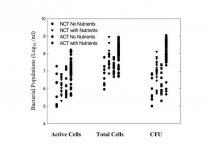When making a botanical tea with kelp meal in particular, when you strain the tea don't throw the hydrated kelp meal away. It still have as much as 50% of the 'things' you used it for in the first place.
Top dress the plants in your yard, add to a worm bin, etc.
This is not trash or anything close to that......
Top dress the plants in your yard, add to a worm bin, etc.
This is not trash or anything close to that......






